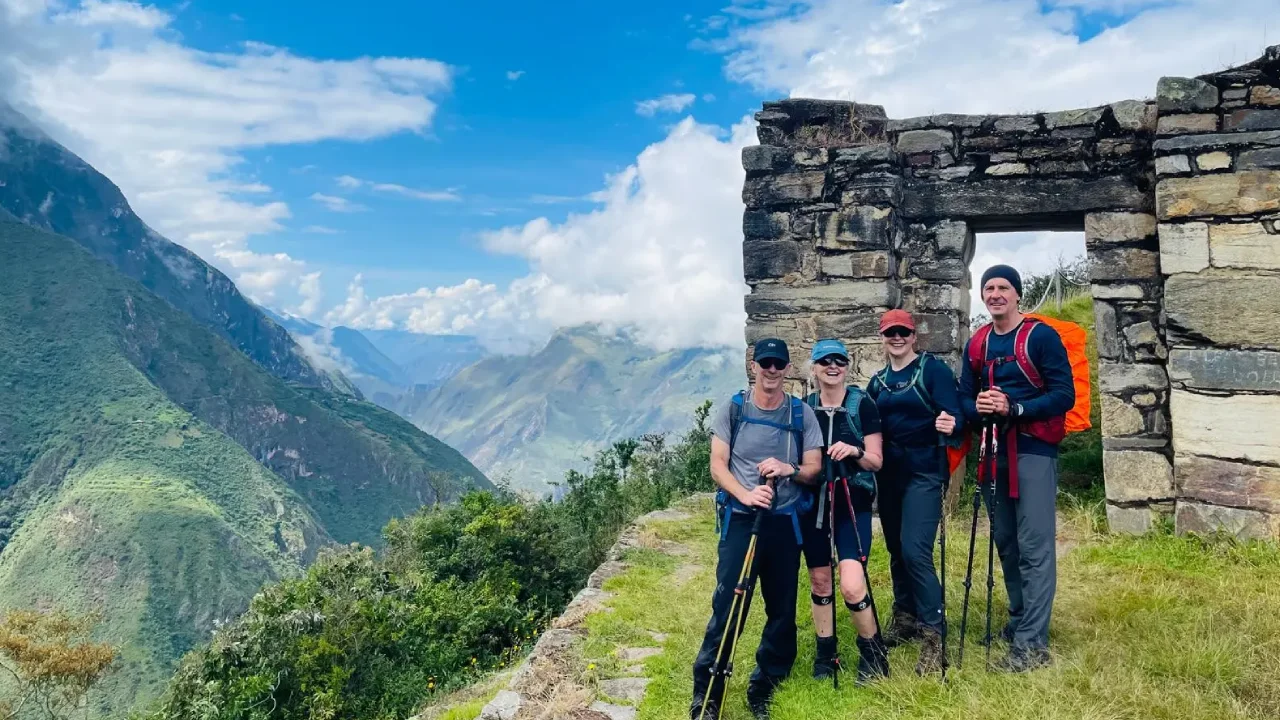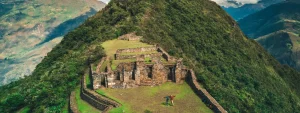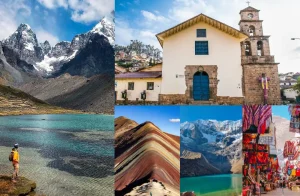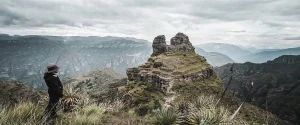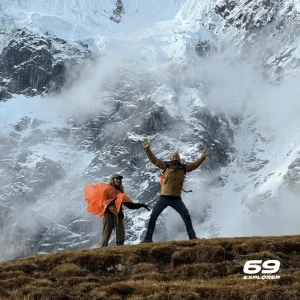Cusco never stops surprising, and proof of this is its majestic Choquequirao. Among so many archaeological centers spread throughout the city, travelers’ favorite will always be Machu Picchu, but there is much more to explore. Discover these amazing sites and more, with our best travel guide for Choquequirao Trek.
Considered the sister of Machu Picchu, this wonderful place is one of Cusco’s greatest treasures. If you didn’t know it before, now we’ll tell you more about this splendid place. We bet that by the end of this blog, you’ll really want to visit it.
What is Choquequirao?
Choquequirao is an archaeological complex located in the middle of a jungle that hides great beauty and mystery. Archeologists believe that during the Inca times, it was the highest point where the Incas collected feathers from exotic birds, mainly used as decoration for the Inca or as offerings.
Where is Choquequirao located?
Located on the highest part of the mountain, it belongs to the community of Yanama, in the province of La Convención. This strategic location even served as a control point for the Incas and connected cities like Pisac and Machu Picchu with what we now call the Amazon region.
Travel guide to Choquequirao
When I had the chance to go to Choquequirao, I didn’t think twice. I took my things and set off on a trip full of doubts and uncertainties that slowly cleared up as the hours went by in the car. So that you can be a little more prepared for this trip, I’ll tell you a bit about this route.
Day 1: On the way to Capuliyoc, the starting point
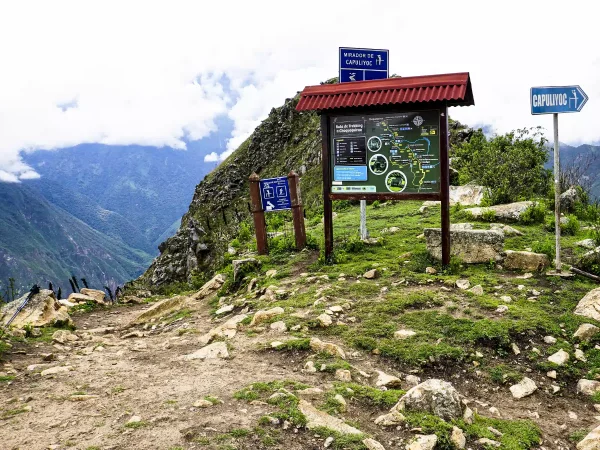
To reach the start of the hike, you have to travel by car from Cusco to Capuliyoc, a small town on the Apurímac Valley trail. The trip can take about 4 hours. The route is very scenic, with lots of vegetation and different landscapes that catch your attention.
In case you’re wondering about curves, yes, there are many. So if you get carsick easily, I recommend sitting in the front so the view can distract you from the road.
Time to walk! Heading to the first campsite
When I arrived, I couldn’t handle the excitement of what awaited me. I grabbed my backpack and gathered the courage to start what would be one of the best and most challenging adventures of my life. From Capuliyoc to the first rest point of the day—our lunch spot—it’s a 3-hour descent to Chiquisca. This path is dirt and partly rocky; in my case, I slipped several times, so be careful.
Once we had lunch, it’s time to continue before night falls, heading to Playa Rosalinas. We keep descending on the same dry trail, which little by little shows us greener vegetation, telling us we’re getting farther from the start point.
You’ll notice you’ve gone down so much that you’ve reached a river where you’ll camp. Don’t worry, everything will be ready for your arrival at the campsite. We rest and get ready to continue the adventure.
Day 2 – It’s time to climb
So far the path had been downhill, but now it’s time to add some excitement to the hike. We have breakfast and see that the climb literally doesn’t end until the top of the hill, but there’s no choice but to continue.
We get ready and begin the climb before the sun catches us; we have about 4 hours to Marampata. I know it sounds tough, but it is doable. On the way, we notice the path is zigzagging and rocky, just like the descent. As we go, we notice the heat getting stronger, but we have to keep going.
While climbing, we see the river that welcomed us at night getting farther away, and we see the mountain surrounding us with green vegetation, showing us there’s no turning back—we’re deep in the jungle that will soon reveal a green Choquequirao.
We pass through Santa Rosa Alta and Baja, get closer to Marampata, and the climb gets more intense. We wipe our sweat and continue until we finally reach our lunch spot. Eager to keep going and visit Choquequirao, we make one last effort to reach Choquequirao in an hour and a half. The good thing is the heat becomes less intense and the path less exhausting.
Finally: Choquequirao!
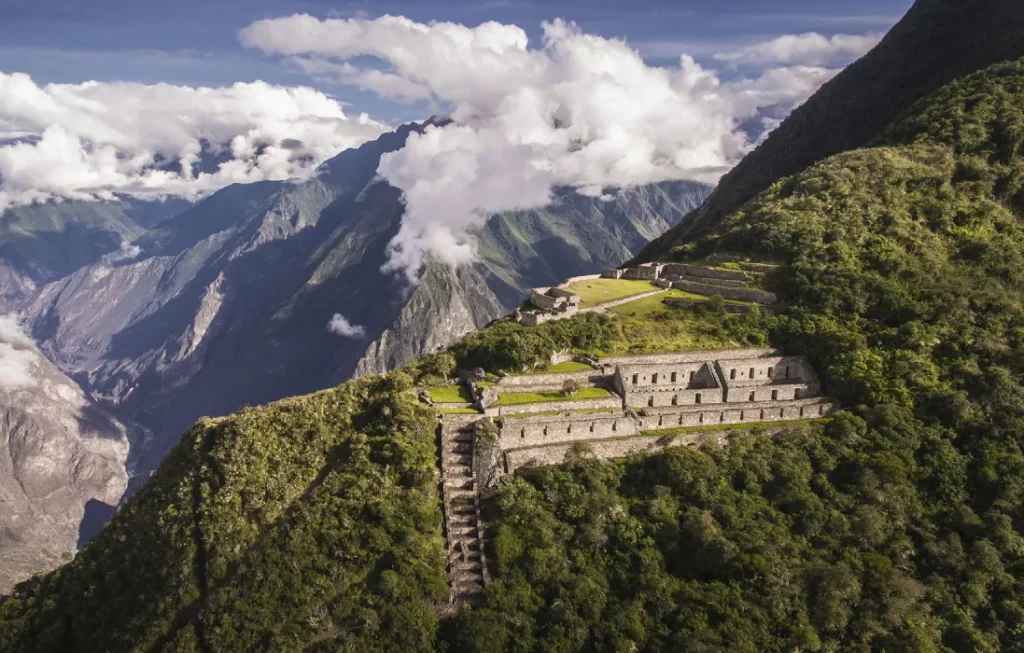
We arrived. I don’t know how, but we did. The challenging path, mosquitoes, heat, and rocks weren’t an excuse to give up. Looking at all this, it’s impressive how the Incas were able to build such a sacred place on such a high mountain with so few access routes.
Highlights
Choquequirao is known for having different areas within the archaeological complex, and it almost seems impossible to finish exploring it.
Hanan: Sacred Temple
Perhaps one of the best-known areas. As its name indicates—Hanan means “High” in Quechua—it’s located in the northern part of the citadel, very close to the main square. This area is characterized by water channels, Inca storage houses, and waterfalls.
The Storehouses (Qolqas)
These were wide spaces designed to store food because of their construction focused on proper storage. They are mainly characterized by good ventilation, which ensured the next supply of products for the population.
The Main Square
Without a doubt, this is the most important place in the archaeological complex. As its name suggests, it’s in the center and is generally the main point where you’ll take the photo to prove you really made it there.
Here you’ll find the famous Kallankas—structures, usually two stories high, considered residences. Also, there are four terraces forming what’s known as a sacred enclave, considered a setting for essential events.
The Portals
These monuments are considered by archaeologists to be dedicated to the ancestors. The reason is that trapezoidal-shaped portals can be seen, believed to mark the place where mummies of important people were kept.
The Ushno
Considered a panoramic platform from which you can see Choquequirao. Located on a platform high on a hill, very close to Choquequirao, to the south of the site. It’s surrounded by a wall of almost 150 meters and terraces shaped like a horseshoe. It’s believed this place was used for religious and even astronomical rituals.
The House of the Priests
This is a construction very close to the Ushno known as the House of the Priests. The site is divided into two areas where the sacred rulers offered religious ceremonies, and so its access was somewhat restricted.
The Sacred Terraces
These are large terraces forming a concave space located northwest of the main square. One of the longest terraces is almost 116 meters long.
The Llama Terraces
The most famous in the entire site. They are in the north of the main part of Choquequirao, covering much of this area. You can see white llamas that give a very special look to the archaeological complex. These are steep terraces of almost 16 levels carved in limestone.
Paraqtepata Terraces
This sector has 18 vertical terraces on the mountain. It’s believed this area was dedicated to farming, and the vertical design was also meant for irrigation.
Phaqchayoq Terraces
Another type of terrace, considered the longest in Choquequirao. In total there are almost 9 terraces, also dedicated to farming.
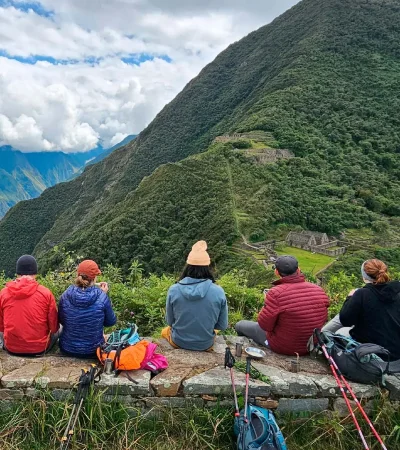
At the end of the visit to the site, full of photos and unforgettable memories—but above all the satisfaction of completing a challenging hike—we’ll arrive at our camp to rest after a hard journey.
After another day visiting Choquequirao, learning about the importance of the site and its main areas, we get ready to walk to the other side of the mountain.
Returning after an accomplished journey
Everything that goes up must come down, right? After being among mountains and majestic Inca sites, it’s time to return. The nutritious breakfast is a sign that the trip is coming to an end. We set off with our things downhill, on the same trail that saw us struggle to reach the long-awaited visit.
Today, our rest point will be in Chiquisca—remember it? We arrived there with our hearts full of hopes that today are dreams come true. The descent, like at the beginning, will be easy. Don’t worry, just try your best so the sun doesn’t catch you. Since it’s a fairly long walk, it will get tiring; I just recommend having plenty of water as your best ally.
Upon climbing back up to Chiquisca, you’ll almost have completed the journey. In this place you’ll enjoy one of the last meals among the mountains—rest, you will have earned it.
With the heart full of memories, it is time to return
From Chiquisca to Capuliyoc, it will be nothing more than a short journey that does not compare to everything you have already traveled. Get ready because the climb is not easy at all but it will have been totally worth it after such a great visit.
We begin the gradual ascent leaving behind the jungle landscape that we knew until just recently. The rocky and challenging path tells us that we are already close. Calm down, because when arriving a beautiful view will be waiting for you, reflecting the precious Apurímac Valley.
Upon arriving, you will be able to have the satisfaction of having fulfilled your mission. The car will be waiting for you to take you to the last point of your journey, the relaxing hot springs of Conoc.
Tips for the Choquequirao Trek
- It’s a hard hike, so it’s a good idea to train a bit before. To get to Choquequirao, the trail basically starts on one mountain and ends on another, facing each other like a “V.”
- Bring insect repellent. There are many mosquitoes in the area, so it’s better to be protected from bites.
- Take cash with you. There are small shops along the way, so having coins or small bills is very helpful.
- You can rent horses. If you get tired, a horse can help you go up and save you from a few blisters.
- Wear good hiking shoes. The trail is sandy and rocky, so you need good support, especially for your ankles.
- Hiking poles are very useful; they help your knees on the uphills and downhills.
- Bring snacks and rehydration salts. It’s a sunny area, and you’ll need to keep your energy up.
Packing List
What you have to take with you
- Original passport (it has to be the same you have used for booking your trek)
- Good daypack (the smaller, the better)
- Water storage: 2-3 liter reusable, not disposable bottles
- Comfortable hiking boots with ankle support
- Sleeping bag (can be rented from Orange Nation Peru)
- Headlamp: essential
- Toilet Paper
What to put in your duffel bag
- 2 t-shirts
- 2 hiking pants at least
- 4 sets of undergarments
- 3 sets of hiking socks
- Bathing suit for the thermal waters
- Fleece/ thermals
- Warm clothes, down jacket for cold nights
- Waterproof gloves (even if they are ski gloves, bring them)
- Comfortable shoes for camp
- Quick dry towel. We provide small ones, you might prefer something larger.
- Small bottle of soap: we provide warm water each day to wash.
- Battery Charger: No electricity along the trek
- Large plastic bags will be provided at the office to line your duffel bag
- Sleeping bag: It has to be at least -15ºC – This can be rented from us.
Toiletries
- Face moisturizer
- Hand sanitizer
- Wet wipes
- Toothbrush and paste
- Personal medications
- First aid kit: band aids, moleskin, etc.
What to put in your backpack
- Water: Please supply your own water until the first lunch spot, then we will provide you with cold boiled water at every meal time. Please bring your canteens.
- Sun hat
- Sunscreen
- Insect repellent
- Headlamp: essential
- Wool hat
- Rain gear
- Fleece
- Snacks like chocolate bars, cereal bars or any dry fruits
- Rain plastic poncho
- Gloves
- Camera
- Hand sanitizer
- Toilet paper and small plastic bag for waste
- Extra money for souvenirs, drinks & tips
- Valuable items

